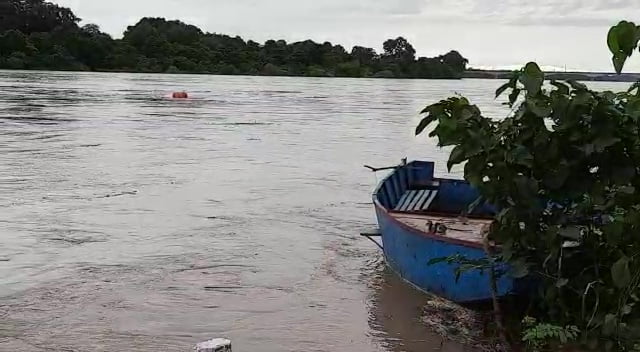Wetlands Panacea To Sea Rise Induced Coastal Floods

Floods have put coastal Odisha on high alert yet again. The state government is on its toes to evacuate people, protect people from breaches of flood embankments, provide relief and overall monitor the flood management operations of the dams such as Hirakud over River Mahanadi. Another devastation that has put up lots of challenges before the state is sea rise and the resultant coastal inundation that has been forcing people to flee their homes and demand relocation elsewhere.
While monsoon floods silt up a lot of natural channels of the rivers in the delta areas thereby preventing proper discharge of flood water into the sea, increased sea level over the decades is forcing many such channels to shrink permanently and thus altering the coastal ecosystems like never before.
Odisha alone is not facing this problem. The entire world is now worried about increased frequency and intensity of floods as well as record breaking sea rise due to climate change. The need of the hour is to understand the interlinkages between all these challenges and to find out solutions through integrated approaches that take into consideration all factors leading to these problems – both natural and man-made – and work out solutions which put eco-systems management at the core. It is already scientifically established that wetlands can play a key role in fostering this ecosystem approach.
More floods
A just-published research paper, which used global models of tide, storm surge, and wave setup to obtain projections of episodic coastal flooding over the coming century, has warned if governments don’t make serious progress in reducing global greenhouse gas (GHG) emissions, there will be an increase of 48 per cent of the world’s land area, 52 per cent of the global population and 46 per cent of global assets at risk of flooding by 2100. This study was conducted with detailed data analysed from thousands of global “hotspots”. It has projected significant change in episodic flooding by the end of the century and found it to be mostly concentrated in North Western Europe and Asia. Several stretches of the Bay of Bengal are projected to face this devastating increase.
Odisha coasts on the Bay of Bengal are already facing several challenges owing to both man-made and natural disasters induced by climate change. The process of erosion and sedimentation, periodic floods and cyclones and sea level changes continuously modify the shoreline. Estimates put it that about 40 per cent of Odisha’s shoreline is facing different degrees of erosion. Thousands of people are, therefore, under the constant threat of losing their lands, livelihoods and rights to local natural resources.
Coastal ecosystems are highly dynamic areas of interactions between terrestrial and marine processes. The process of erosion and sedimentation, periodic floods and cyclones and sea level changes continuously modify the shoreline and hence needs to be taken seriously in our planning process especially if we want to reduce the impacts of such changes as well as build our resilience to climate change. Wetlands such as the mangroves can play a big role in building such resilience.
Prioritise wetlands in NDCs
Nations are in the process of submitting their updated Nationally Determined Contributions (NDCs) under the Paris Climate Agreement. This agreement has set a goal to keep global average temperature increase substantially less than 2°C against the pre-industrial value but intends to make all attempts so that this can be kept below 1.5°C deg. The NDCs are also aimed at building capacities of communities to adapt to climate change and build resilience. The NDCs at the moment need to triple their pledges to achieve the below 2 degree Celsius ambition and increase those by five times in order to be able to meet the 1.5 degree C ambition. A just-published report on the importance of integrating wetlands into the NDCs reminds us of the importance of wetlands such as mangroves and peatlands in meeting our ambitious climate goals. In fact, the Intergovernmental Panel on Climate Change (IPCC) has already emphasised on the importance of conservation of high-carbon ecosystems such as wetlands, including mangroves and peatlands, as mitigation response options with high impacts.
Ecosystem approach and community rights
Sadly, we are losing our mangroves and ecosystems on a large scale. It is estimated that the world has lost 35 per cent of its wetlands since 1970. The destruction continues. In the Odisha coasts, mangroves and other wetlands already play a vital role in our fight against cyclones, inundation of saline water into freshwater systems and in preventing floods. But they have also been the victim of our unmindful and destructive development activities. It is high time we valued the mangroves and other wetlands not only for the local livelihood opportunities they provide but also for the vital biodiversity they support.
It is estimated that the ecosystem services provided by natural wetlands make up 43.5 per cent of the monetary value of all natural biomes. More valuable are the critical functions they play in building our defence against disasters, including floods, and poverty of coastal communities who regularly face these disasters.
Most importantly, the local communities need to be the major stakeholders in protection and conservation of the mangroves and other wetlands. For that they need to have their rights over these resources recognised. We have seen how people displaced from coastal areas due to sea rise have been finding it difficult to access the nearby forests that once formed an integral part of their lives and livelihoods. While our NDCs should step up their efforts to integrate role of mangroves and other wetlands in an ecosystem approach in their climate mitigation efforts, at the local level the adaptation measures should integrate rights of the communities along with the roles of government, civil society and scientific communities in supporting better adaptation measures.

Comments are closed.